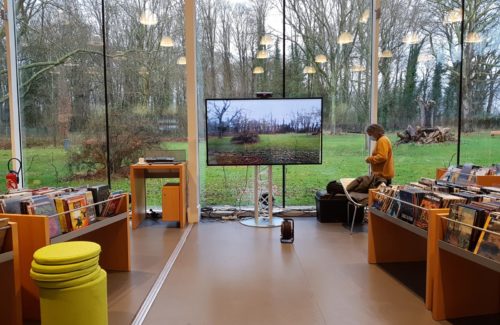Presentation of the artwork
A monumental fresco in public places between France and Japan….
The electro-video artist Lionel Palun proposes with Fresque#1 a monumental fresco, broadcasted through two giant screens located in public places – one in France, the other one in Japan.
The artwork will bring into resonance these two distant places through a video feedback principle -one of the artist’ trademark – mingling infinitely as mirror images two simultaneous video recordings from both countries. What can arise between these spaces inhabited at different times of their respective lives, taking into account the time lag ?
Train station, airports and other public places are places of transition, of expectation, where it is common to dive into a solitary activity, isolating ourselves from others. The device will allow passers-by to participate randomly to an experience that puts them in connection with people in the same situation but geographically distant. What we are building here is a form of co-presence. The work is thus both similar and different between the two countries, playing with the illusion and contemporary myth of
ubiquity.
…playing with urban data to which it gives shape…
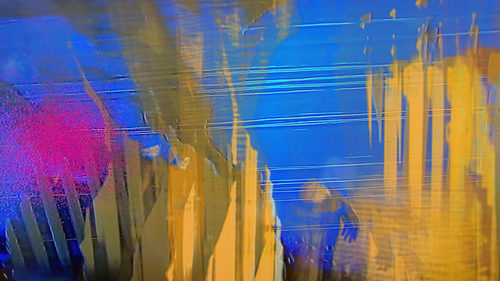
Fresque#1 is an interactive digital fresco that Lionel Palun creates with today’s brushes : video, networks, real-time algorithm, the Internet and data flow. Several types of data will indeed be used to generate in real time
an abstract visual score that will modulate the loop of images between France and Japan.
Fresque#1 proposes thus a sensitive approach of the data via a shared and hybrid image, which materialize into an artistic form an urban breath, the invisible threads pulled by the city. Lionel Palun questions us through this artistic installation on the poetry that can emerge from human and data flow that intermingle.
…and inhabitated by passers-by with whom it interacts.

This evolutive and abstract fresco will also be populated by the audience as it passes by. The artwork indeed feeds with the silhouettes from travelers as well as from elusive appearances of portraits that are being randomly captured and that immediatly scatter into a system of particles that follow the people’s movement. The audience thus becomes the artistic raw material of this artwork, bringing it into life by its own presence and driving its evolution.
An artistic installation generated through an arts & sciences research process
The consortium of Europe + Japan project FESTIVAL has invited Atelier Arts Sciences to join this project through the organization of an arts & sciences residency with the artist Lionel Palun.
The project Fresque #1 was imagined within this collaboration.
FESTIVAL is a collaborative project (Nov.14-Oct.17) led by CEA-Léti and gathering 7 Japanese partners and 7 partners from Europe (France, Italy and Spain) and supported by the European Commission (H2020 project).
FESTIVAL project’s vision is to provide IoT experimentation platforms providing interaction facility with physical environments and end-users, where experimenters can validate their Smart ICT service developments in various domains such as smart city, smart building, smart public services, smart shopping, participatory sensing, etc.
Creation/Touring : The artwork will be created in Nov. 2017 between France and Japan.
First prototypes connecting two nearby places have been created and presented successively in Tuba (Lyon – June 20th 2016), EXPERIMENTA Fair (Grenoble, 5-8 October 2016).
The artwork has also been designed to be adapted and presented afterwards in several places and festivals, recreated each time according to the spaces it will invest and connect. The artistic installation will thus embody, in a certain extent, the identity of the cities or districts that will welcome it.
Artiste : Lionel Palun, electro-video artist
Associated researchers : William Guicquero, researcher at CEA-Leti
Contacts :
– Artistic direction / 720 Digital :
Lionel Palun
– Production / Atelier Arts Sciences :
Léa Deshusses – lea.deshusses@theatre-hexagone.eu
+ 33 428 70 17 45
Technical Description
1. General principles of the installation
Fresque#1 takes the form of constant video feedback between the two places, enriched by two types of data : video capture of spectators passing in front of the installation and real time data provided by sensors located in the installation area of close by.
Neither the data related to the spectators nor the video stream are being recorded.
2. The principle of video feedback
The principle of video feedback is to capture the broadcasted image. In analogy with audio feedback, the video camera replaces the mike and the screen replaces the speaker.
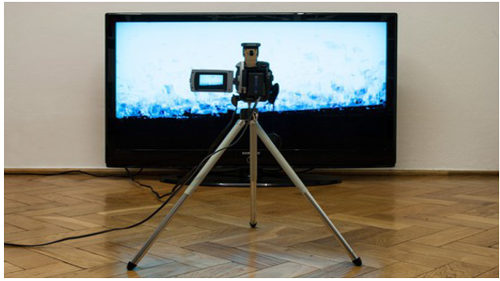
In Fresque#1, the video feeback is dual. An image is captured in one place, broadcasted in the other place, captured again and broadcasted again in the first place. We thus obtain a continuous and real time loop between the two places.

3. Feeding video feedback with data
Data are used to create a live graphical score inlayed in the double video feedback stream. No image is being recorded.
3-1- Data collected by sensors linked to the public places
Several data related to the public places (uses of public transportation, passenger flow, electric consumption, meteorological data…) will be used to generate real time and abstract graphical score :

To embody the breathing of a public place, Lionel Palun will select sets of dynamic data that will bring life to its image. These data must evolve quickly over time, so that their modulations can be perceived easily. 3 types of fluctuations rhythms will be considered : 10 minutes, 1 minute and 1 second.
The combination of data will need to be relevant so that, together, they indeed make people feel the rhythm of a place and of the several streams crossing it.
Specific working periods with William Guicquero, researcher in CEA-Léti, and other researchers / ingeeneers involved in the project FESTIVAL will focus on identifying data which are relevant in terms of dynamic and content for the artwork. This selection will also be done in discussion with locations presenting the installation.
3-2- Data generated by audience watching the artistic installation
A video camera capture spectators and generate in real time two types of data : spectators’ silhouettes and a photo portrait of one of the spectators chosen randomly.
For image capture and processing, the artist decided to use a « smart cam », a platform developed by CEA-Léti in the framework of FESTIVAL to do local smart vision through live image processing. The system enables endless reconfigurations. It enables, for example, to remove a picture’s background, keep only people’s silhouettes and replace them in another picture, count the number of people being captured, track their movements… That type of platform will enable Lionel Palun to extract the audience body and face from their original environment and place them into an abstract environment, just next to somebody from another place in the world.
Several research residencies with William Guicquero, researcher at CEA-Léti enabled Lionel Palun to explore the potential open by this camera and to develop the specific applications required for the artistic installation.
Silhouettes
Spectators’ silhouettes are inlayed in real time in the graphical score

Photo portraits
Photo portraits are captured by the video camera and get overlayed on the graphical score and transformed right away into monochromatic particles.
The spectator from which the face has been captured can move the system of particles thanks to its body movement during about 10 seconds. The portrait then get erased from the device and another portrait takes its place.

The portrait is transformed in a system of particle and disappear right away into the video feedback.
4 – Complete schema of the artistic installation’s device
The schema hereafter represents the artistic installation’s device. In this final device, the installation screen differs from the screen where the feedback is being created. The platform is a computer which receives data from video camera and sensors, creates real time graphical score, overlay it with video feedback stream and send back this stream on the screens in both locations.

5. Technical requirements for the presentation of the installation
The installation requires in both locations :
![]() a giant TV HD screen (at least 3×4 metres)
a giant TV HD screen (at least 3×4 metres)
![]() a dedicated high speed & symetrical network (same speed for inputs and outputs) with possibility to keep the same IP address.
a dedicated high speed & symetrical network (same speed for inputs and outputs) with possibility to keep the same IP address.
![]() access to local data
access to local data
![]() possibility to secure the artist’s material (camera and computer).
possibility to secure the artist’s material (camera and computer).
All the other material is being brought by the artist / Atelier Arts Sciences (computers, cameras,
artwork’s cartel)
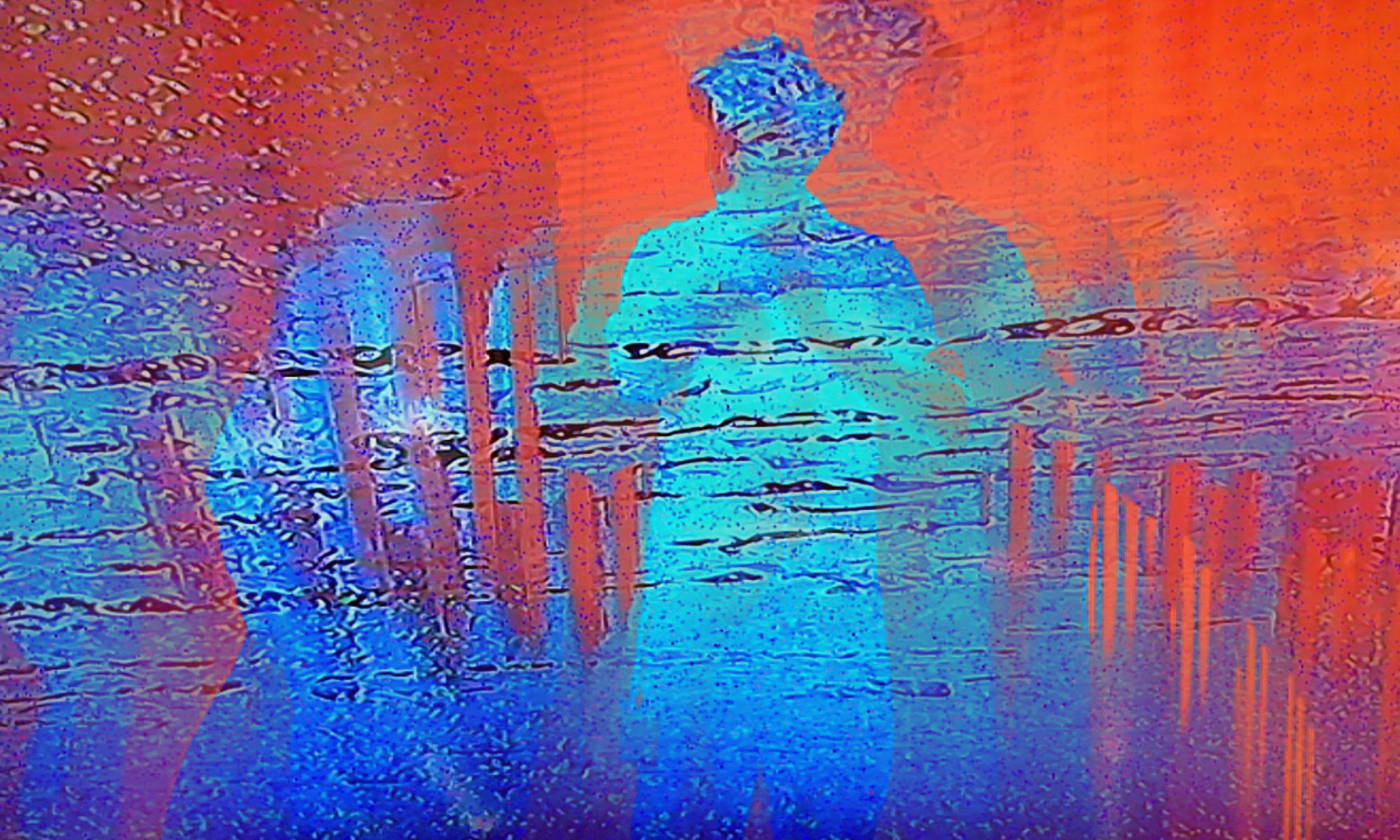











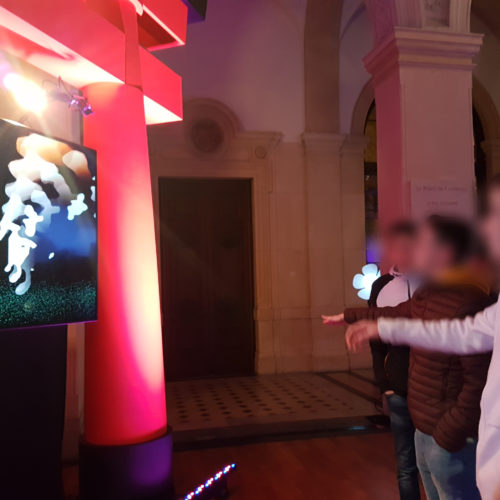

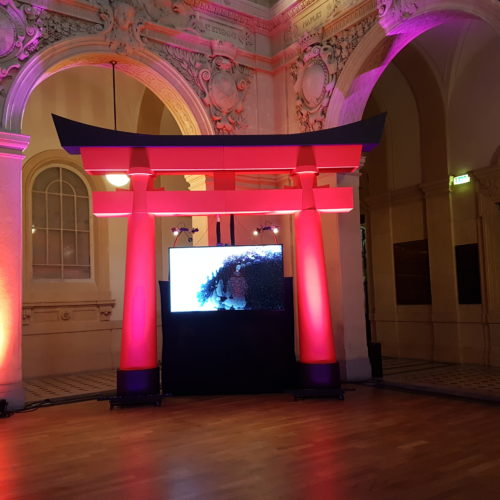


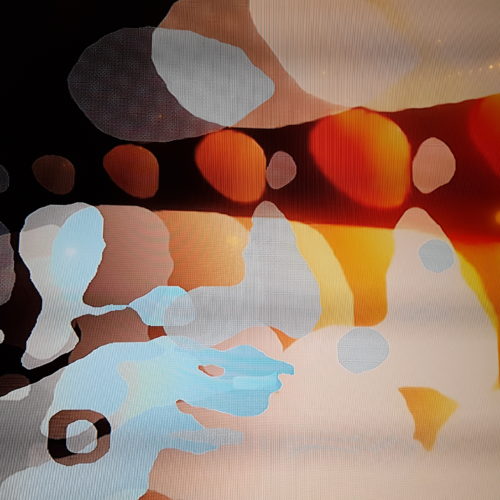



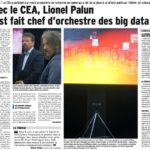
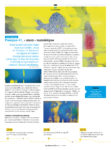
 Duo and Improvisation:
Duo and Improvisation:

